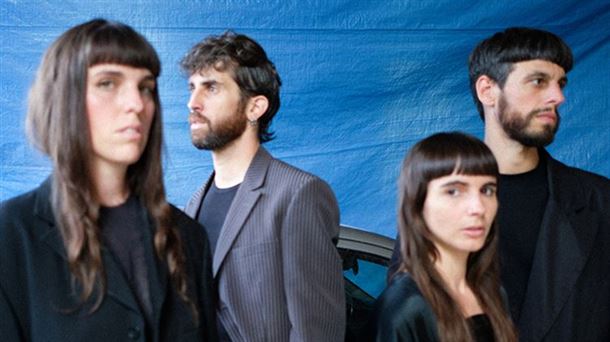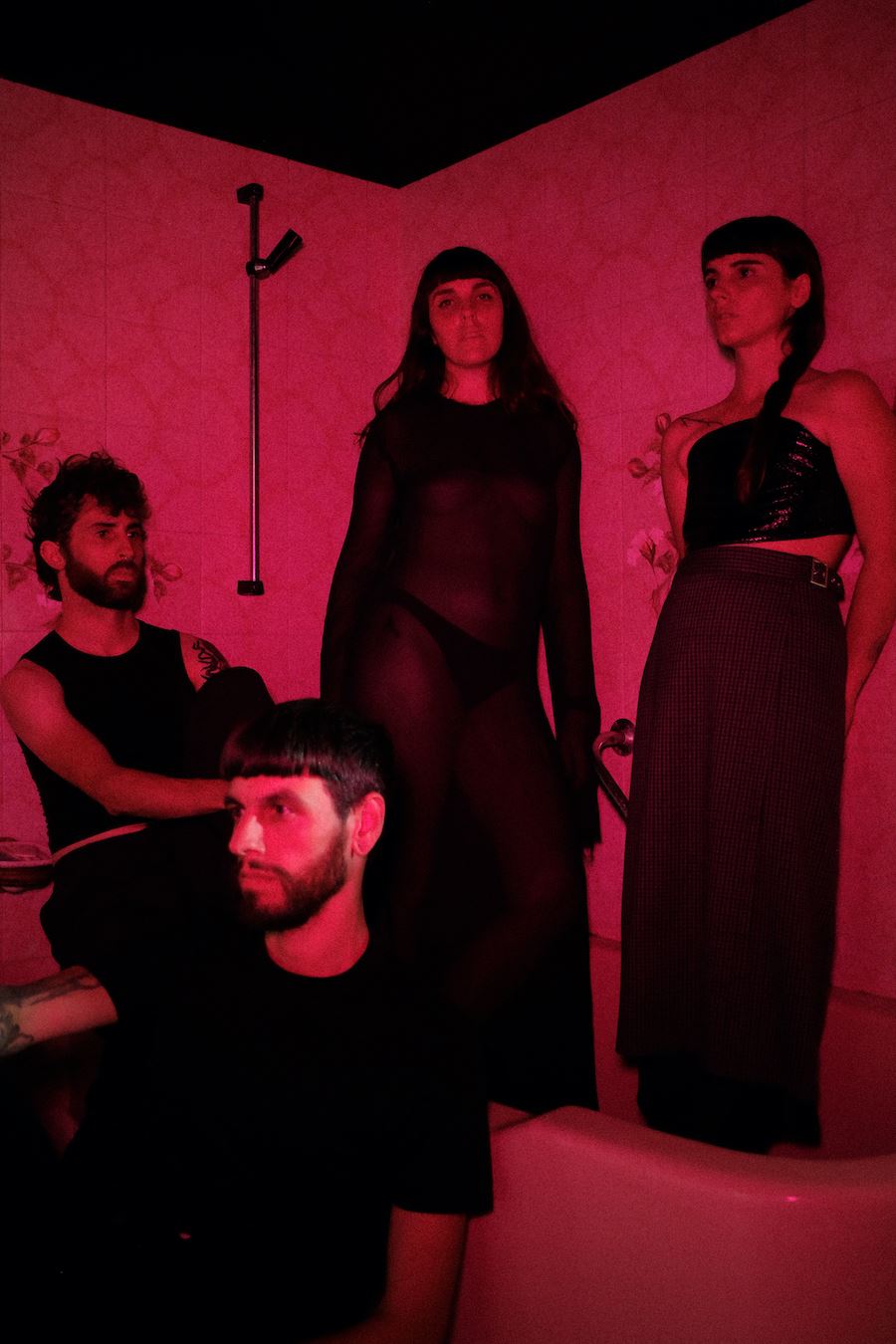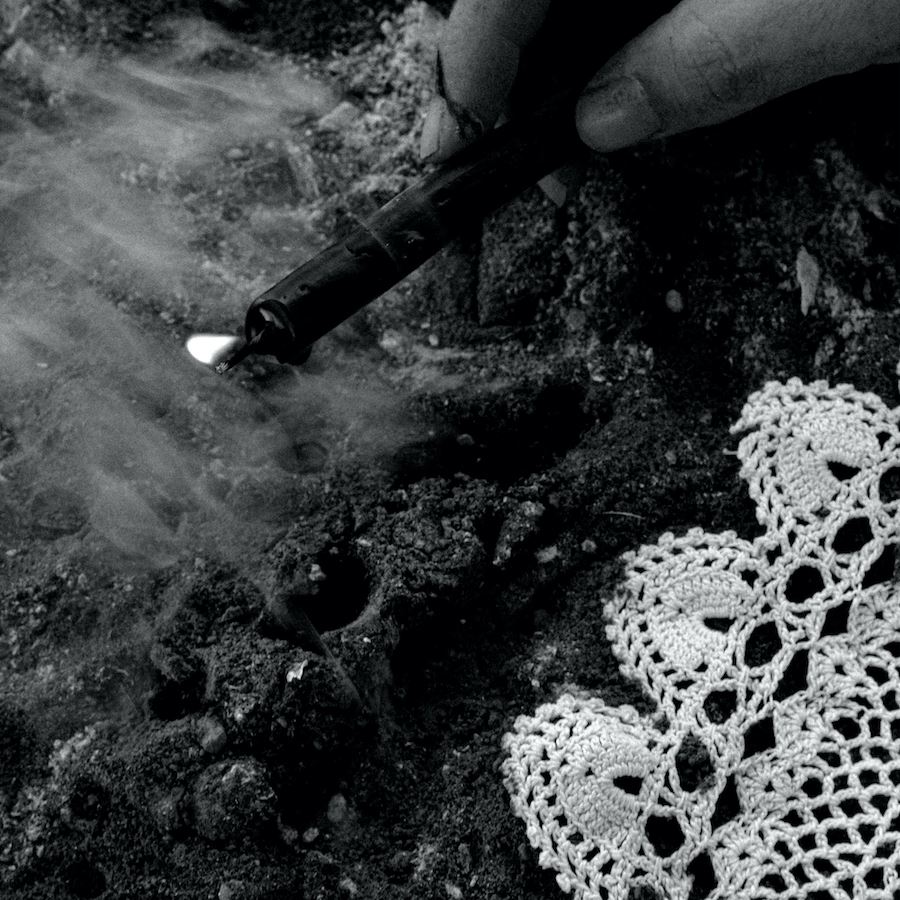Euskaraz irakurri: Orbel: “Iluntasunetik argitasun kutsu batera heltzen gara beti”
The quartet orbel he steps on his second album again, Lur hezea (Usopop Diskak & Medication Time Records, 2022), flooded and muddy terrain, in a continuation of his previous album, Heganin which lullabies and pagan requiems resound in the dark.
Even so, the light is more dazzling the greater the darkness from which it is viewed; so Orbel’s dark sounds arrive more splashed with color than ever, thanks to a greater presence of the voice, both in its melodies and harmonies, and rhythmic patterns.
We have spoken with Txomin Urriza, Kamille Dizabo, Alan Billi and Annelise Arnaud about their new album, which brings the listener closer to a more relaxed Neurosis, echoes of Portishead and pagan litanies.
The rhythms and the voices have gained presence in your new album, Lur hezea, in comparison with Hegan. What is this evolution due to?
Kamille: We could say that, in a way, we see Lur hezea, our second work, as more mature. As the years have passed and we have grown older, our desire to embark on new paths has grown, our purpose for going in different directions has broadened, as is the case naturally in most bands.
The rhythms have a greater presence because Alan’s latest projects and experiments have pushed him to switch from the guitar to the machines. Thus, he has been able to propose a powerful rhythmic base that has opened the doors to new universes and environments.
On the other hand, from the beginning we wanted to give more space to the voices and the lyrics for those voices. I don’t quite know what the reason is; It may be that we have achieved greater trust between us as we get to know each other better, the need to feel and say more things… I don’t know. But it is clear that the voices provide more melodies and harmonies.
The disc contains songs written in the last two years. How have you worked with a pandemic involved?
Kamille: As I told you, Alan came up with a lot of ambiences and beats created with the machines. From there we start the composition process, creating different songs depending on the day or our mood, looking for the right energy and dynamics…
The pandemic coincided in this process, of course, but I don’t think that this element was a bad influence on the group or changed our point of view. After all, we had more time to create, play together and enjoy the music we were creating.
What does an idea or a song have to have to push you to work on it?¨
Kamille: When we start to create something, feelings and emotions dominate. Most of the time, we start from a base that removes something from all of us; so it can be said that this is what pushes us.
As there are four of us, it may turn out that something in the composition takes a direction or a feeling that generates contradictions or a point of disagreement: or, on the contrary, that someone bets on it and discovers new paths.
We do and undo everything we create until all four of us like it.

Orbel. Photo: Fanny Maillard.
Electronics offer endless options. When do you stop composing a song?
Kamille: I think the options are as endless as the obstacles. While recording the album, we tried to balance all those options that machines give us and the organic look that we keep.
To do this, Amaury Sauvés, from The Apiary studio, offered us great help. In the end, he would say that the electronic sounds have served to reinforce our organic music, highlight the dynamics and feed the intensities.
What has Amaury Sauvé brought to the songs?
Kamille: As I told you, Amaury’s point of view has been fundamental. I helped us a lot in the production, because he is a very clear and astute person.
Thanks to the participation of someone so specialized, we have been able to deepen our message, our dynamics and intensities. The first stay in Laval, which is where the studio is, we did in September 2021. Then we started working and specifying things with Amaury. Then we had a month to adjust our songs, and at the end of November we went back to Laval, to record and finish the production work.
Your songs give off darkness. What kind of listener do you have in mind, if not when creating, when editing your records?
Kamille: They say the best songs are the most desperate (ha ha ha). We like the songs and they come out that way, but I think that from the darkness we always reach a trace of light, or at least that’s what we try to do. Not everything is dark, in the same way that not everything is light, because one could not live without the other.
Our project is not aimed at a special audience. When we write or release a record, we don’t think about that. We do and offer what we like. So our listeners will be the ones who enjoy the emotions and contrasts that our music can offer.

Orbel. Photo: Fanny Maillard.
You take great care of the visual aspect. What are the Orbel concerts like and will they be like?
Kamille: We have tried to take care of the visual section from the beginning, but that does not mean that we give priority to appearance or image. The images tell other things, they appeal to us in different ways.
We wanted to give different dimensions to our project, mixing the artistic geniuses that we have around us (Fammy Maillard for the photos, Mikel Perez in the lights, Mathieu Garcia in the sound…). We are working live with Mikel and Mathieu; It is appreciated the tremendous work they do on the lights and sound.
Txomin and Annelise will present two other albums at the Durango Fair, the one by Bazka (“Basoaren ilunean dantza”) and the one by Mäirü. What is it like to play in such stylistically different projects?
Annelise: In music, as in life, I feel the need to explore different worlds, to wear different costumes. I am lucky to play in two groups made up of friends.
Mairü is very instrumental, melodic and light, while Orbel is more linked to the voices and is more refined and reflective. Both projects represent quite different aspects of the human condition, and balance my emotions. The bad thing is that it is quite difficult to manage the schedule, because I also work full time, but I can’t complain about that…
Txomin: In addition to Bazka and Orbel, I play in the groups Kuma No Motor and Venil (with Alan, from Orbel, and our lighting technician Mikel). Playing in four groups with very different styles allows me to create very different environments, not wanting to direct and impose all my desire in a single project.
In that sense, it’s very reassuring for me and the rest! Some groups are a kind of catharsis for me, and others give me the option to experiment. And, above all, they offer me the chance to be with friends.
Lumi, Habia, Kuartz, Willis Drummond, Bloñ, Odei, Ztah, Torheit, yourselves, in another magnitude Gojira… Music production is experiencing a great moment in Iparralde. Is there a common feature in all these proposals?
Kamille: It is clear that the creative projects in Iparralde are proving fruitful, but not only in the field of music… We can also find small treasures in dance, theater or video creation.
I don’t know what common traits all these proposals have, but I believe that we have all found inspiration in art in one way or another, and that we all have something to say. And I think that in Iparralde there is a point of courage to try and mix things without fear. That is why there are so many special proposals.
Looked at from another point of view, the Basque language or the desire to create in Basque could unite us.
Taking into account that we are at the Durango Fair, how do you see Basque creation and the music industry?
Kamille: It’s difficult to talk about Basque musical creation, because fundamentally there will be different and highly subjective points of view. Basque music is rich, with varied colors and tastes, which is ultimately the most important thing. Creating music has never caused pain; if you don’t like a style, you can listen to the one you like, period.
Annelise: I prefer to talk about creation than about the industry (above all, because at the moment with Orbel we spend more money than we earn, so the economic aspect is very distant for us). I believe that what unites all these projects are our language -Basque- and our territory -Euskal Herria-; It seems little, but it is not!
This shows that music and art do not have a single voice, but rather have many and varied colors and flavors. We have very deep-rooted rock, but today the aesthetics have multiplied, and it is a pleasure to see that rich culture on the stages and streets of our towns.

‘Lur hezea’
What other records and books will you buy in Durango?
Annelise: The new one by Lumi, the new album by the Willis Drummond group, the stupendous latest work by Mice, the sweet songs by Peru Galbete, Aitor Etxebarria, Gartxot’s projects (Ghau and the collaborations).
Txomin: Ødei’s record. Without forgetting that in Euskal Herria there are a lot of music groups and movements that do not appear in the Azoka. Durango’s is a photo, but outside of that frame many important things happen. Be curious, listen and go see concerts!
Source: Eitb
Mario Twitchell is an accomplished author and journalist, known for his insightful and thought-provoking writing on a wide range of topics including general and opinion. He currently works as a writer at 247 news agency, where he has established himself as a respected voice in the industry.











